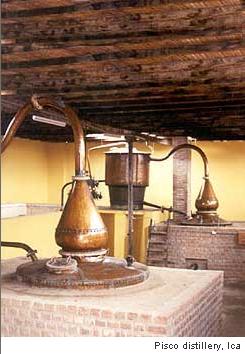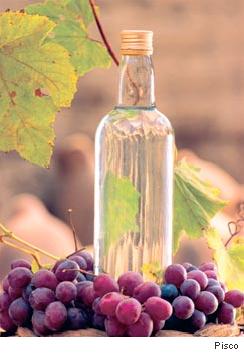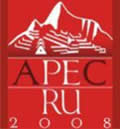United Kingdom
| Welcome |
| Peru in Brief |
| History |
| Geography |
| Government & Politics |
| Maritime delimitation between Peru and Chile |
| News |
Links |
| PISCO IS PERU |  |
||
Pisco is a natural product originating from distilled fermented grape juice from selected grapes grown in the rich wine region of the Ica Valley - around the Pisco and Ica rivers - located 300 km. south of Lima, the capital of Peru. |
|||
The favourable conditions of the soil and the semi-calid climate make of the Ica Valley the perfect setting for the growth of a unique variety of grapes. |
|||
Pisco is also a Peruvian city and an important port on the Peruvian coast located near the famous Nazca Lines. The name originates from the Inca word for "bird", one of the mysterious designs on the famous Nazca lines, Ica. |
|||
Pisco has not only given its name to Peru's national drink, one of the highest quality liqueurs and symbol of the Peruvian tradition but it is also the centre of its production and distribution worldwide. |
|||
Location |
|||
The only Pisco producing areas in the world are located within the coastal areas of the Departments of Lima, Ica, Arequipa, Moquegua and the valleys of Locumba, Sama and Caplina in the Department of Tacna in Peru. |
|||
Pisco is produced using both ancient and modern techniques and can be enjoyed in its pure form or used to prepare various cocktails, such as the well-known "Pisco Sour". This is served in the best restaurants in Latin America and throughout the world. It can also be mixed with other liqueurs, fruit juice or soft drinks. The main markets for Pisco are currently United States, Chile, Costa Rica, Venezuela and Canada. |
|||
Origins |
|||
During the XVI century grape vines were brought to Peru from the Canary Islands by the conquistador Marquis Francisco de Caravantes. In the first years of Spanish colonisation, the production of wine expanded throughout Peru. It must be pointed out that the first wine making in South America took place at the Marcahuasi farm in Cuzco in 1560. |
|||
Such was the success, that the wine began to be exported from Peru to other Spanish colonies. The worried Spanish wine producers negotiated a ban on this trade with Felipe II in 1614. As a result of this ban, the farming Jesuit monks shifted the emphasis of their trade and intensified production of grape liqueurs using pre-Inca style earthenware containers also known as Piscos. These entrepreneurs went out and found new markets throughout Christendom. |
|||
These early endeavours established the foundation for major international growth in the trading of Pisco during the XVII and XVIII centuries. This resulted in new centres of production particularly Ica and Moquegua, where production was further enhanced by developing viticulture techniques. |
|||
| Types of grapes used | |||
Pisco was initially made from 'Quebranta' grapes, a local non aromatic variety of the black grape brought from Spain, that gives it a very particular and characteristic flavour. This drink is known as 'Pure Pisco' and is also obtained from the distillation of other non-aromatic selected grapes, such as 'Mollar' and 'Negra Corriente'. There is also an 'Aromatic Pisco' obtained from the distillation of aromatic Muscat grapes such as 'Italia', 'Moscatel', 'Torontel' and 'Albilla'. A third type is the 'Acholado', obtained from the mixture of aromatic and non-aromatic grapes. Finally, you can find the 'Mosto Verde', which is distilled from unfermented grape juice. |
|||
PISCO SOUR |
|||
 |
 |
||
| Ingredients | |||
| 1 shot Pisco 1 shots sugar 1 shot lime juice 1 egg white 6 ice cubes |
|||
| Preparation | |||
| The sugar should be dissolved in the Pisco before adding the lime. | |||
| Whizz in a blender, or shake. | |||
| Add a dash of Angostura. | |||
| http://www.peruvianenterprises.com | |||
| <BACK> | |||





